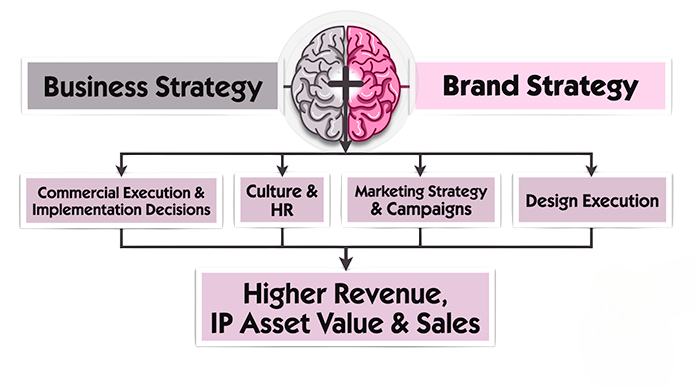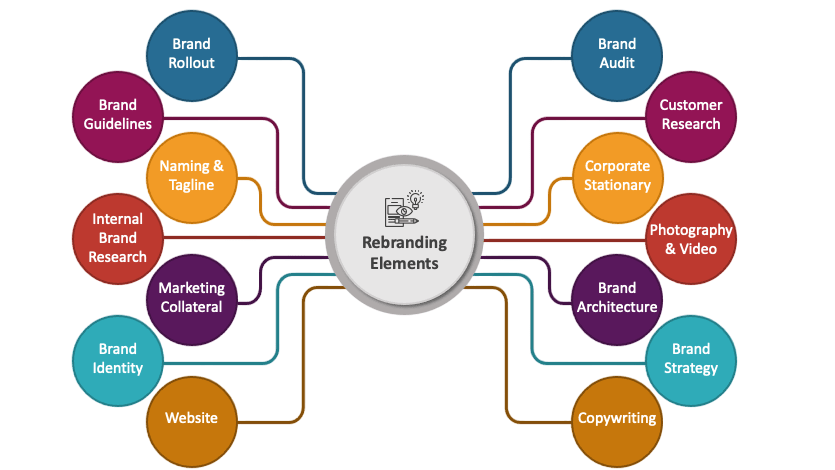
- Definition of Branding
- Brand Identity vs Image
- Importance of Consistency
- Building a Brand Strategy
- Visual Branding Elements
- Voice and Messaging
- Customer Touchpoints
- Branding on Digital Platforms
- Monitoring Brand Reputation
- Rebranding Strategy
- Brand Loyalty Programs
- Successful Branding Examples
- Conclusion
Definition of Branding
Branding is the process of creating a distinct identity for a product, service, or organization in the minds of consumers. It involves the use of names, symbols, slogans, colors, and other elements that differentiate a business from its competitors. More than just a logo or a tagline, branding encapsulates the entire experience a customer has with a company a holistic approach emphasized in Digital Marketing Training, where learners craft cohesive brand identities, align visual elements with messaging, and build emotional resonance that drives loyalty and recognition. Effective Brand Marketing communicates the values, personality, and mission of the business, influencing perceptions and encouraging emotional connections. Effective branding is essential for recognition, loyalty, and market positioning. It shapes how consumers think and feel about a business and influences their purchasing decisions, making strategic Brand Marketing a key factor in long-term success.
Ready to Get Certified in Digital Marketing? Explore the Program Now Digital Marketing Online Training Offered By ACTE Right Now!
Brand Identity vs Image
Brand identity refers to the visible and verbal elements a company uses to present itself to consumers. This includes the logo, typography, color schemes, tone of voice, and overall style. It is what the brand says about itself and how it wants to be perceived messaging architecture explored in Types of Content Marketing, where formats like blogs, videos, infographics, and case studies help shape brand identity, communicate values, and reinforce positioning across every customer touchpoint. Brand image, on the other hand, is the actual perception that consumers hold. It is shaped by customer experiences, marketing communications, word-of-mouth, and online reviews. While brand identity is controlled by the business, brand image is shaped by public opinion. Alignment between the two is crucial for authenticity and trust. A strong, positive brand image built upon a consistent brand identity fosters long-term customer loyalty.
Importance of Consistency
- Consistency is a cornerstone of effective branding. When a brand maintains uniformity across all customer touchpoints, it builds trust and reinforces recognition. Whether through advertisements, customer service interactions, or social media posts, consistent messaging and visual identity help consumers develop a clear understanding of the brand.
- Inconsistent branding can create confusion and erode trust. It also makes it harder for customers to recall the brand and differentiate it from competitors. Companies that uphold consistency not only appear more professional but also demonstrate reliability and dedication to quality. This consistency extends to every facet of the business, from product packaging to employee behavior.
- Creating a successful brand strategy involves defining the brand’s core purpose, target audience, unique value proposition, and market positioning. The process begins with thorough market research and competitor analysis to understand industry trends and customer needs.
- The next step is to articulate a clear brand mission and vision that resonate with the intended audience an approach reinforced in Effective YouTube SEO Tips, where creators learn to align video content with brand identity, optimize metadata for discoverability, and build consistent messaging across thumbnails, titles, and channel descriptions. This strategic alignment boosts visibility, engagement, and long-term subscriber growth.
- Companies must also identify their brand personality whether it’s sophisticated, fun, professional, or innovative and communicate this consistently across all platforms. A robust brand strategy aligns marketing, operations, and customer service efforts to deliver a cohesive brand experience. It acts as a roadmap for all branding efforts and helps maintain focus during growth or change.
- Customer touchpoints are the various interactions a consumer has with a brand throughout their customer journey. These include visiting a website, engaging on social media, receiving emails, talking to customer service, and using the product or service itself. Each of these interactions contributes to the overall brand experience touchpoint orchestration enhanced by Email Marketing and Its Tools, where marketers map email flows to key journey stages, personalize content based on behavior, and use automation platforms to deliver timely, relevant messages that reinforce brand perception and drive loyalty.
- It is essential that every touchpoint reflects the brand’s identity and values. Inconsistencies at any stage can disrupt the customer experience and damage the brand image. Well-managed touchpoints enhance customer satisfaction, foster loyalty, and encourage repeat business. Brands must map out these touchpoints carefully and ensure they are optimized to deliver consistent, positive experiences.
- In the digital age, a strong online presence is crucial for branding success. Digital platforms such as websites, social media, mobile apps, and email campaigns offer numerous opportunities to build and reinforce brand identity. A responsive, well-designed website establishes credibility, while engaging content on social media fosters community and interaction.
- Email marketing enables personalized communication, while search engine optimization (SEO) improves visibility. Digital branding should maintain visual and messaging consistency to create a seamless experience across all platforms. Brands must also adapt to trends such as video content, influencer marketing, and voice search. A robust digital branding strategy is vital for reaching and resonating with today’s tech-savvy consumers.
- Brand loyalty programs are designed to encourage repeat business and foster long-term relationships with customers. These programs reward customers for their purchases, engagement, or referrals through points, discounts, exclusive offers, or early access to products. Loyalty programs not only increase customer retention but also provide valuable insights into customer behavior.
- Effective programs align with the brand’s values and appeal to the target audience’s interests. Personalized rewards and seamless experiences enhance the perceived value of the program. Digital integration through apps and websites makes participation more convenient. Well-executed loyalty programs turn satisfied customers into brand advocates, amplifying word-of-mouth marketing.
To Explore Digital Marketing in Depth, Check Out Our Comprehensive Digital Marketing Online Training To Gain Insights From Our Experts!
Building a Brand Strategy

Visual Branding Elements
Visual branding encompasses the graphical aspects that represent a brand and make it instantly recognizable. These include the logo, color palette, typography, imagery, and design style. The logo is often the most recognizable symbol, serving as the face of the brand visual identity elements explored in Digital Marketing Training, where learners craft cohesive brand systems, align design assets with messaging, and build memorable digital experiences that resonate across platforms. The color palette evokes specific emotions and associations, while typography sets the tone for how messages are perceived. Imagery and design elements, such as iconography and layout, contribute to the overall aesthetic. Together, these elements create a visual language that conveys the brand’s personality and values. Maintaining visual consistency across websites, advertisements, packaging, and merchandise is essential for brand coherence.
Looking to Digital Marketing Training? Discover the Digital Marketing Expert Masters Program Training Course Available at ACTE Now!
Voice and Messaging
Brand voice and messaging refer to the tone and style in which a brand communicates with its audience. This includes the choice of words, sentence structure, and the overall mood conveyed. A brand might choose to be formal and authoritative, or friendly and conversational, depending on its target demographic and industry tone decisions central to Video Marketing, where creators learn to align style with audience expectations, using explainer, testimonial, or storytelling formats to reinforce brand identity and drive emotional engagement across platforms. Messaging should consistently reflect the brand’s values, mission, and personality. Whether it’s a tweet, product description, or customer email, the brand voice should remain uniform. Consistent messaging builds familiarity and trust, enabling customers to form emotional connections. It also reinforces brand identity and makes the brand more memorable.
Customer Touchpoints
Preparing for Digital Marketing Job Interviews? Have a Look at Our Blog on Digital Marketing Interview Questions and Answers To Ace Your Interview!
Branding on Digital Platforms
Monitoring Brand Reputation
Brand reputation is how a brand is perceived by customers, stakeholders, and the general public. In the digital era, managing brand reputation is more critical than ever due to the speed and reach of online feedback. Companies must actively monitor online reviews, social media mentions, and customer feedback to identify and address issues promptly feedback intelligence supported by what is Sitecore, where brands use Sitecore Search Analytics and the Customer Engagement Console to track user interactions, analyze sentiment, and refine digital experiences based on real-time behavioral data and attribution models. Tools like Google Alerts, Mention, and Hootsuite can help track brand sentiment. Positive reputation builds trust and drives customer loyalty, while negative publicity can have long-lasting effects. Transparent communication, excellent customer service, and prompt issue resolution are key to maintaining a positive brand image. Regular reputation audits help identify areas for improvement.
Rebranding Strategy
Rebranding involves changing one or more aspects of a company’s brand to better reflect its current mission, market, or customer base. It may include updating the logo, altering the brand voice, or revamping the entire visual identity core elements addressed in What is Branding and why it is Important, where businesses learn how strategic branding shapes perception, builds emotional connection, and ensures consistency across every customer touchpoint, from design assets to messaging tone. Rebranding is often necessary during mergers, market repositioning, or when a brand becomes outdated. A successful rebrand requires thorough research, clear objectives, and a detailed implementation plan. Stakeholder communication is crucial to ensure alignment and buy-in. Rebranding should not alienate existing customers but rather evolve the brand to stay relevant and competitive. It is a strategic move that, when executed well, can rejuvenate a brand and open new market opportunities.

Brand Loyalty Programs
Successful Branding Examples
Several global brands have become benchmarks for successful branding. Apple, for instance, has built a minimalist, innovative, and premium brand image through consistent product design, messaging, and customer experience. Nike leverages emotional storytelling and powerful visuals to convey themes of motivation and excellence brand-building tactics exemplifying the Benefits of Social Media Marketing, where campaigns like “Just Do It” use relatable narratives, inclusive messaging, and high-impact visuals to foster community, drive engagement, and build lasting emotional connections with global audiences. Coca-Cola is another example, maintaining brand consistency across decades while appealing to nostalgia and happiness. Airbnb uses community-driven content and a friendly tone to establish trust and belonging. These brands invest heavily in market research, maintain visual and verbal consistency, and continuously evolve with consumer preferences. Their success demonstrates the impact of a well-thought-out and executed branding strategy.
Conclusion
Branding is far more than logos and slogans, it is a comprehensive strategy that shapes perceptions, builds relationships, and drives business success. From developing a consistent brand identity and voice to engaging customers across multiple touchpoints, every element plays a vital role in effective Brand Marketing an integrated approach refined through Digital Marketing Training, where learners build unified brand systems, craft cross-channel messaging, and foster customer loyalty through strategic engagement. With the rapid growth of digital platforms, monitoring brand reputation and staying responsive to market trends are more important than ever. Rebranding, loyalty programs, and real-world case studies highlight the dynamic nature of branding and its impact on customer engagement. By investing in a solid brand strategy and leveraging Brand Marketing, businesses can create lasting impressions, drive loyalty, and achieve long-term growth in an increasingly competitive marketplace.




